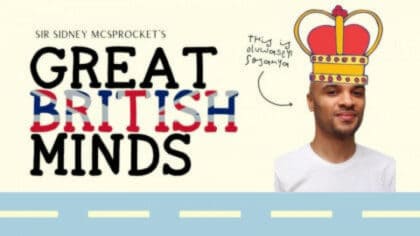Have you ever seen a road map? In the past people used atlases and maps to plan their routes. Today it’s more common to use satnav and map apps.
Road maps don’t just show roads, they show all sorts of interesting details like lakes and forests, castles and churches. Why not see if there’s a road atlas in your house?
Maps and satnav are important to drivers because navigating the road system can be complicated. Britain’s roads stretch for a quarter of a million miles, which means if you wanted to walk every one it would take you fourteen years!
Roads come in all shapes and sizes. Here are some of the different types of road…
Motorways
Motorways are broad and wide, two, three or more carriagewways. These are designed for vehicles to travel at high speeds and overtake safely. Only one percent of the roads in our country are motorways but they’re very popular, carrying over a fifth of all the traffic. Because vehicles travel fast, slow vehicles like bicycles and pedestrians aren’t allowed to use motorways. Motorways are also marked with an ‘M’ and their signed are blue with white lettering.
Primary Roads
Primary roads are just as important in getting people from A to B as motorways, but are smaller and slower than motorways and could have either single or dual carriageways. About 12% of roads are primary roads but they carry nearly half of all the traffic. -Primary road signs are green with white writing.
Non-Primary Roads
Non-primary roads connect people with more local places and mostly just have single carriageways. They have signs that are white with black writing.
Minor roads
Roads that are less important than the roads they join are known as ‘Minor’ roads. They include the narrow roads in the countryside and areas where there are pedestrians and houses. It’s likely your home and school are on roads like this. To make sure pedestrians are safe, you’ll sometimes see bumps to keep speeds low, and pelican crossings to help people move safely around the traffic.
The smaller types of roads make up 87% of all roads and so are the most common type of road you’ll find. But although there are a lot of them, they aren’t quite so busy, accounting for only 34% of all road traffic.
Cars cars cars!
We really do love our cars. There are over 38 million cars on Briatin’s road and that number increases every year. And out of all the different ways to take a journey – whether on a bicycle, the bus, train or on foot – cars are the most common choice.
It’s hard to predict what’s to come, but it seems certain that as the number of vehicles increase – and that includes, cars, lorries and buses, congestion will also increase making journeys take longer. It’s something road planners and engineers are thinking about – the challenge of making sure our journeys are smooth and safe – both now and in the future.
DID YOU KNOW?
- At the end of March 2019, there were 31.7 million cars , 4.1 million Light Goods Vehicles, 0.5 million HGVs , 1.3 million motorcycles and 0.9 million other vehicles on our roads.
- The most common car in 2018 was the Ford Fiesta.
- Most cars spend 80% of the time parked up at home, 16% of the time parked somewhere else and only 4% of the time actually driving on the roads.
- 59% of new cars registered in 2018 where either grey, black or white, with grey the most popular colour.
- The car is the most common mode for distance travelled, accounting for 78% of the total distance travelled in 2017.
- The average number of miles a car in the UK travels each year is 7,800 miles.
- If you added together all the miles travelled by all the cars in 2018 it would be 328 billion miles.
- Car traffic is forecast to grow between 11% and 43% by 2050
- The average car journey taking 17 minutes in 2015 could increase to 20 minutes by 2050.
- In 2017, the total road length in Britain was 246,700 miles, with 76.5% in England, 14.9% in Scotland and 8.5% in Wales.
- The busiest stretch of road in Britain is the western half of the M25, between Junctions 14 and 15, with 219,000 vehicles per day in 2018.

Are We There Yet? with support from the Royal Academy of Engineering
Add a commentRoad to 2050
Find out more about why roads are built and how they help us get around the country.
More From Road to 2050






